Discover Your Dream Tiny House
Embarking on the journey to discover your dream tiny house unlocks a world of creativity and opportunity. As you explore various tiny home construction plans, consider the benefits of tiny house living that offer both affordability and a minimalist lifestyle. Imagine crafting every inch to your liking, using tiny house interior designs that reflect your personality and cater to your needs. From the coziness of affordable tiny homes to the versatility of a tiny house on wheels plans, there's a myriad of tiny home designs to choose from. Delve into the realm of tiny house design ideas and how to build a tiny house tailored to your dreams. Tiny home blueprints and the best tiny house kits provide the foundation for turning your vision into reality. Whether it's a stationary abode or a mobile sanctuary, the allure of tiny home plans lies in their adaptability and charm, enabling you to create a home that truly resonates with you.
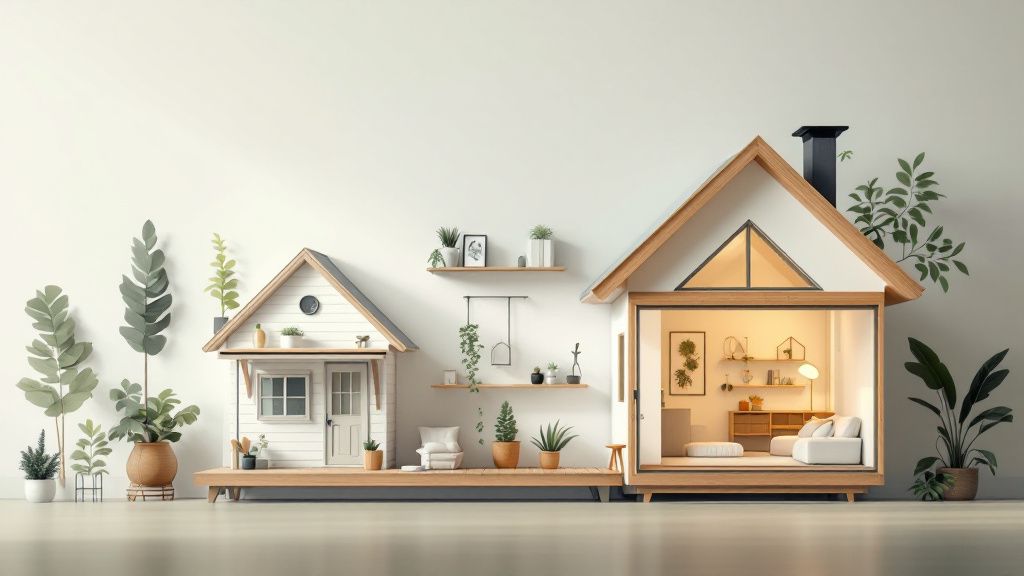
Benefits of Downsizing
What drives people to embrace tiny house living? Downsizing offers a significant shift towards a more sustainable, simplified lifestyle, free from the burdens of maintaining large spaces. With tiny home construction plans, you can minimize your environmental footprint and reduce utility costs, all while maximizing your living experience. By shedding excess space, you focus on meaningful possessions and experiences.
Choosing affordable tiny homes also bolsters financial freedom, allowing you to allocate funds towards experiences rather than material goods. Integration of tiny house design ideas ensures that you don’t sacrifice style or comfort. Opting for thoughtfully customized tiny house interior designs provides satisfaction in living spaces that cater to your needs while maintaining budget-friendly living.
Curious about how to build a tiny house that supports a mobile lifestyle? Tiny house on wheels plans present unparalleled freedom, letting you explore new locales without leaving home behind. These plans blend mobility with comfort, enabling you to adapt effortlessly to diverse environments while still indulging in the comforts of your own space. Tiny home blueprints offer detailed guidance, simplifying the construction process and ensuring personalized touches.
For those starting from scratch, the best tiny house kits simplify construction, providing everything you need to create your perfect retreat. The process of assembling your own space fosters a sense of accomplishment and allows for precise customization. Tiny home designs are versatile, accommodating everything from cozy retreats to chic micro-dwelling aesthetics, each crafted to reflect your identity and preferences. The benefits of downsizing stretch beyond simplicity, encompassing financial stability, mobility, and self-expression through design.
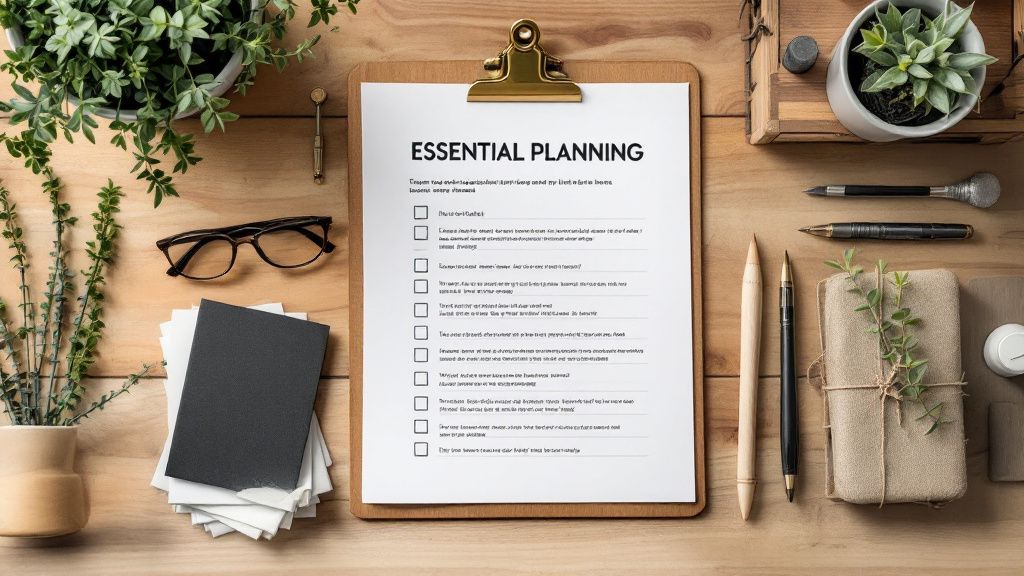
Essential Planning Steps
Understanding the essential planning steps in building a tiny home sets the foundation for a successful project. Begin by defining your needs and lifestyle preferences to guide your tiny home construction plans. Identify what features are non-negotiable and explore tiny house design ideas that align with your vision. Early decision-making creates a clear path forward and helps streamline the planning process.
Budgeting effectively ensures that you can achieve your vision for affordable tiny homes without overspending. Research various financing options and consider cost-effective materials that maintain quality in your tiny house interior designs. Creating a detailed budget that accounts for tiny home blueprints and potential unexpected expenses provides added security and clarity.
Hidden beneath the surface of tiny house construction is the meticulous attention needed for space optimization and sustainability. What most people don’t see is the intricate behind-the-scenes effort that makes all the difference, from selecting energy-efficient appliances to solutions for maximizing every square foot. Familiarize yourself with how to build a tiny house that seamlessly integrates these elements from the start, ensuring your home is both functional and stylish.
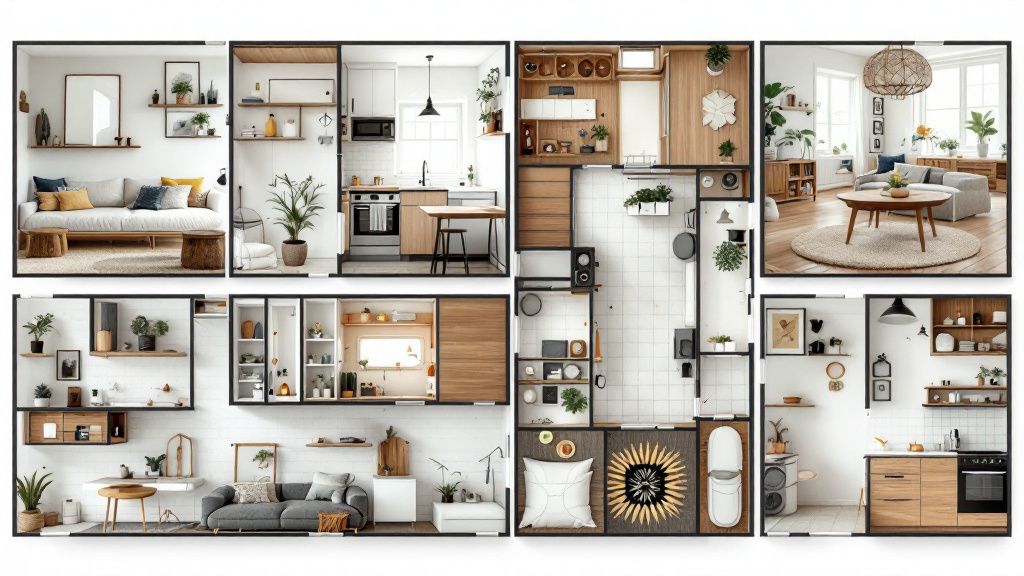
Innovative Design Ideas
Exploring innovative design ideas can transform your tiny home plans from basic to breathtaking. Consider integrating multi-functional furniture to maximize limited space, turning every nook into a purposeful area. A fold-out dining table serves double duty, offering a versatile solution for dining and working. This approach to tiny house interior designs creates a seamless balance between aesthetics and practicality, making the most out of every square foot without compromising style.
Embracing the concept of vertical living can revolutionize your tiny home adventure. By extending storage upwards with shelves and lofted areas, you significantly increase usable area. For example, utilizing a lofted sleeping area leaves valuable floor space for living and dining, proving to be both an efficient and chic solution. Vertical living strategies are integral to successful tiny house design ideas due to their space-harnessing potential.
The incorporation of natural lighting plays a critical role in enhancing the ambiance of tiny homes. Large windows not only invite ample sunlight but also give the illusion of expanded space, making your home feel brighter and more welcoming. Sliding glass doors lead effortlessly to the outdoors, strengthening the connection between your tiny home design and nature. This open concept touch aligns with the modern ethos of tiny house living.
Technological innovation breathes fresh life into the humble elements of tiny homes. Solar panels and energy-efficient appliances are hallmarks of sustainability, promoting eco-friendly living and reducing utility costs. Incorporating smart home systems in your tiny home construction plans provides unparalleled control over temperature, security, and lighting. These design elements allow you to build a tiny house that is both advanced and harmonious with today’s eco-conscious trends.
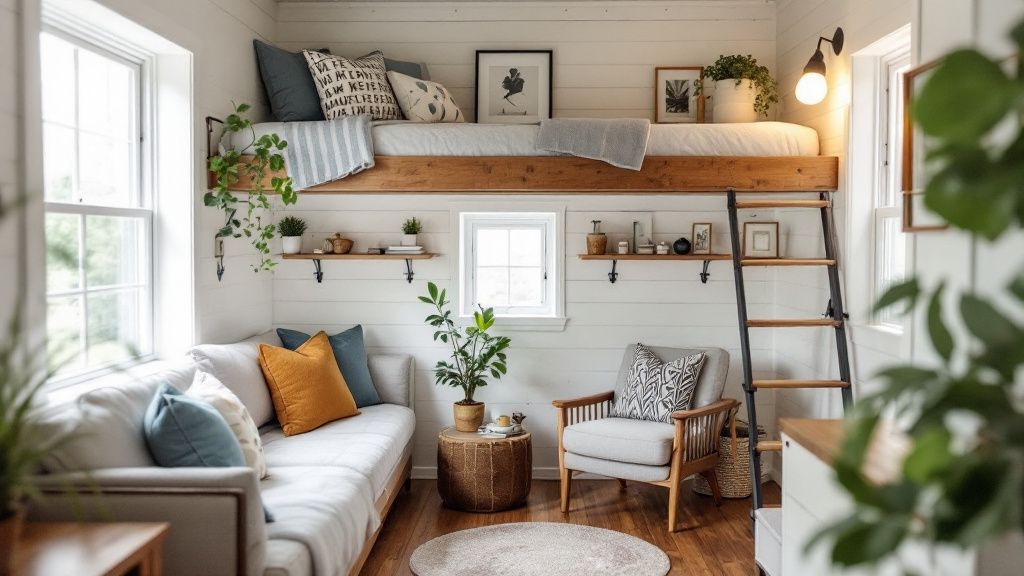
Essential Tiny Home Features
Designing your tiny home involves prioritizing essential features that elevate comfort and functionality. Maximizing storage efficiency is crucial, with hidden compartments and built-in cupboards offering practical solutions. These smart storage ideas fit perfectly into your tiny house interior designs, enhancing space without clutter. By carefully planning storage, you maintain an organized, inviting space that suits tiny house living.
Incorporating energy-efficient systems is another key consideration for tiny homes. Utilizing solar panels and low-consumption appliances reduces your ecological footprint and supports sustainable living. Did you know? About 61% of tiny house owners have less energy consumption compared to traditional homeowners. This commitment to sustainability is a vital aspect of successful tiny home construction plans.
A well-designed kitchen is paramount in your tiny home, serving as a hub for cooking and socializing. Compact appliances paired with innovative tiny house design ideas allow for gourmet meals within a limited footprint. Thoughtful layout decisions ensure that your kitchen remains functional while contributing to the sleek aesthetic of your home, ultimately forming the heart of daily activities.
Creating a flexible living area can significantly enhance the adaptability of your space. By implementing multi-use furniture and adaptable layouts, you ensure the area caters to diverse activities, from relaxation to work. These dynamic features are vital components of tiny home blueprints, allowing your space to transform as your needs change, proving that small living can be both comfortable and versatile.
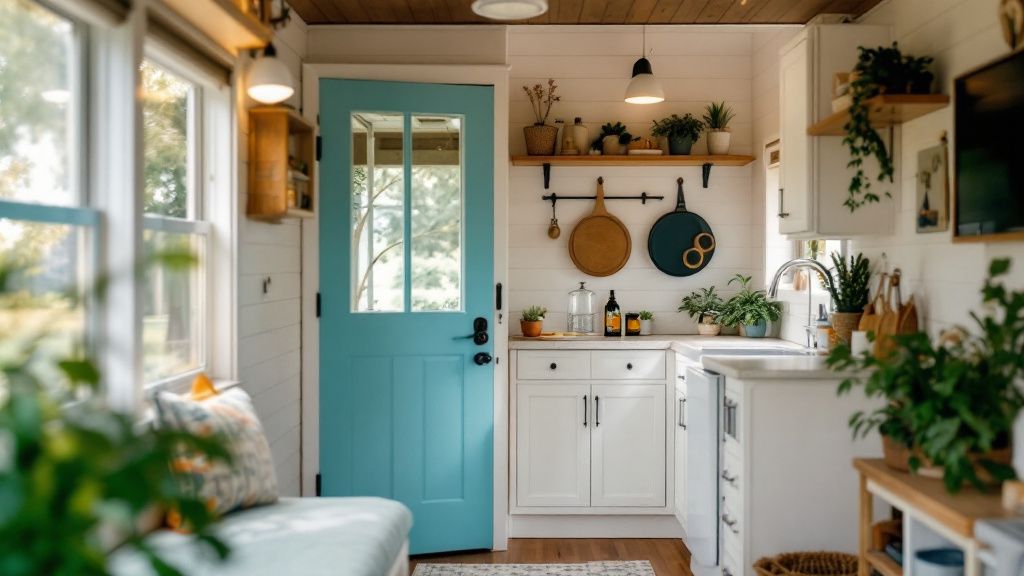
Real-Life Tiny Home Stories
Reading real-life tiny home stories offers a glimpse into the diverse experiences of those who have embraced this lifestyle. Take Emily and James, for example, who transformed a modest 250-square-foot dwelling into a cozy sanctuary using tiny house design ideas. Their journey with tiny house living highlights the transformative power of creativity and intentional design, reflecting their personality within every corner of their space.
Exploring the tale of Mike, who built his dream tiny house on wheels from scratch, showcases the potential of tiny house on wheels plans. Mike’s story emphasizes the freedom and mobility offered by such designs, allowing him to explore various landscapes without sacrificing comfort. To make the most of living on the road, try incorporating flexible and durable materials that withstand frequent travel demands.
For those with a focus on sustainability, Marty's eco-friendly approach to tiny home plans illustrates the benefits of integrating green technologies. By utilizing solar power and rainwater harvesting systems, Marty ensures that his home aligns seamlessly with his environmental values. This commitment to sustainability within tiny home construction plans not only reduces ecological impact but also enhances self-sufficiency.
These stories confirm that with thoughtful planning and innovation, tiny homes can become personalized havens tailored perfectly to individual lifestyles. The experiences shared demonstrate that investing in tiny home designs and embracing diverse inspirations make for a fulfilling minimalist living experience.
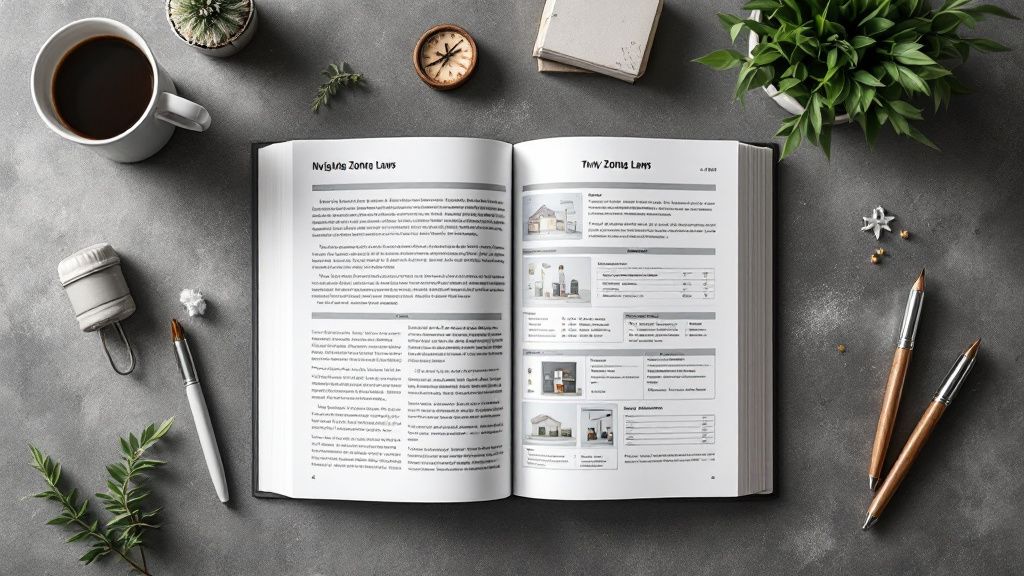
Navigating Zoning Laws
Understanding zoning laws is a crucial step in the journey of embracing tiny house living. These regulations dictate where you can place your tiny home and under what conditions it can exist. Before you dive into tiny home construction plans, familiarize yourself with local zoning ordinances to ensure compliance and avoid potential legal obstacles. This groundwork forms the backbone of a successful transition into minimalistic living.
The challenges posed by diverse zoning laws can be met with strategic planning and knowledge of exemptions or variances available in your area. Often, tiny houses fall into a gray area within existing regulations, making it essential to navigate these waters carefully, especially if considering a tiny house on wheels plans. Being informed about these regulations helps prevent setbacks and facilitates smoother integration into community settings.
Looking ahead, zoning laws are expected to evolve in the following ways, especially as the tiny home movement continues to gain popularity. Increasing awareness and advocacy are driving changes that might offer more flexibility for tiny home dwellers. Urban planning adaptations could present more opportunities for affordable tiny homes, supporting a growing demand for sustainable, flexible living solutions. Keeping abreast of these changes ensures you remain adaptable and informed as new developments unfold.




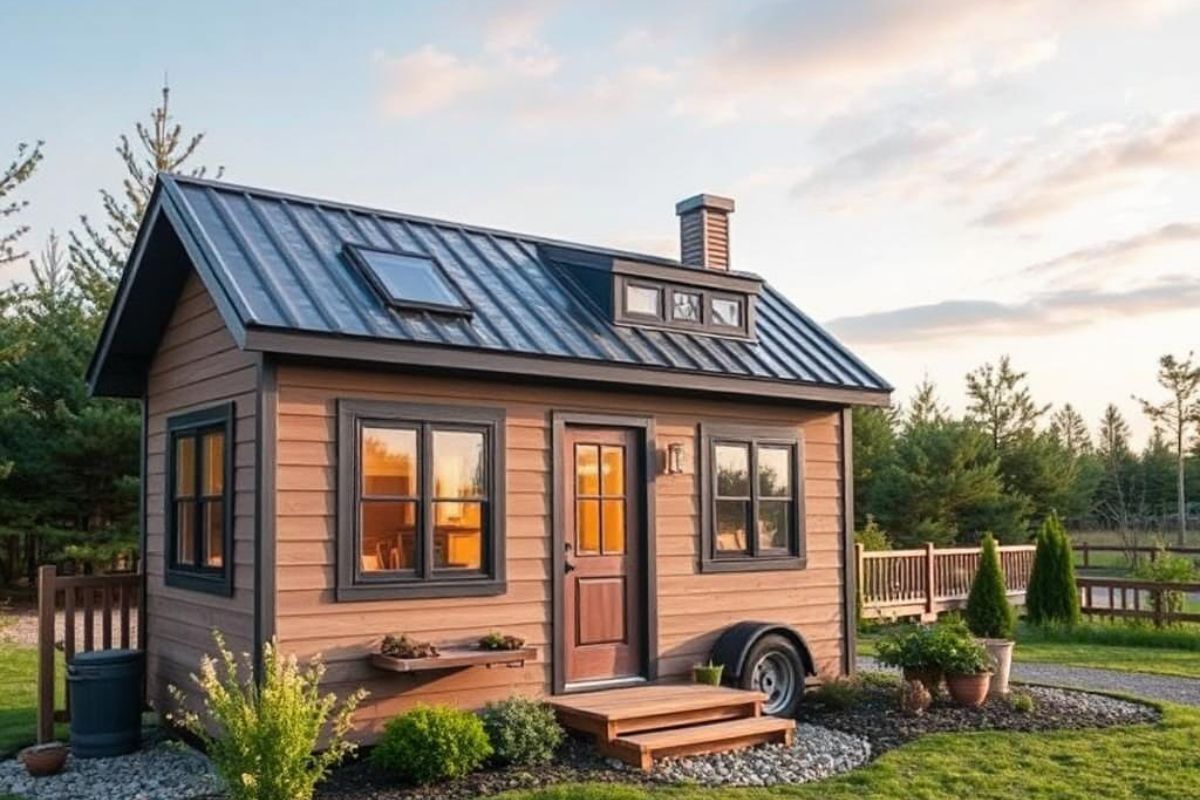
Share: